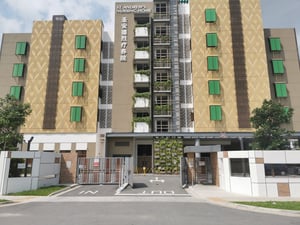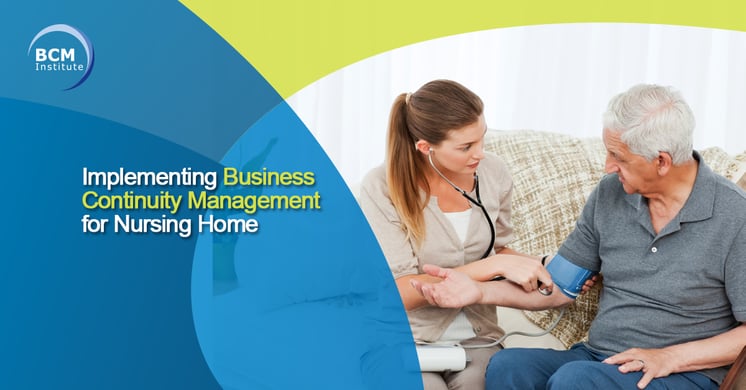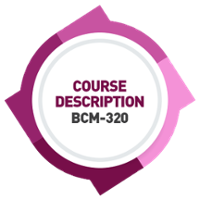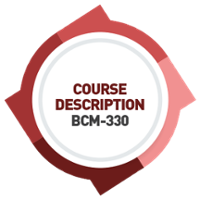What are the Key Steps Undertaken to Implement BCM for a Nursing Home?
Before starting your Business Continuity Management (BCM) project for your Nursing Home, one of the initial vital steps is to have a good "Understanding of Your Organisation: Nursing Home." This is required by the ISO 22301 BCMS standard so that your planning effort is in the context of business continuity management.
Nursing Home service providers perform a unique role in society, looking after the elderly, frail, and vulnerable of all ages. They provide long-term care for seniors who cannot be cared for at home or in their community.
In the context of Nursing Home in Singapore, it is a long-term residential care facility. Nursing Homes also assist residents who need help in most of their activities of daily living and have daily nursing care needs. With this role comes the unique responsibility of ensuring that those individuals entrusted to them receive the highest quality of care and are kept safe from harm. Hence, one of the initiatives is to ensure that the Nursing Home, if affected by a disruption or incident, can recover and resume its operations in the shortest possible and acceptable time.
Several agencies in Singapore, including the Agency for Integrated Care (AIC) and the Ministry of Health (MoH), monitor the quality of that care. These bodies rightly focus on the quality of the care given to residents. Still, they also focus on the duty of social care providers to keep people safe and manage risks to individuals and the service provided.
The objective of BCM for Nursing Home
The purpose of BCM for Nursing Homes is to prepare owners and operators of aged care facilities on the issues that need to be considered to ensure continuity of service to residents and clients during disruptions caused by a disaster.
What is Business Continuity Management?
According to the ISO 22301 BCMS Standard, Business Continuity Management (Goh, 2015), or BCM, is a “Holistic management process that identifies potential threats to an organization and the impacts to business operations those threats, if realized, might cause, and which provides a framework for building organizational resilience with the capability for an effective response that safeguards the interests of its key stakeholders, reputation, brand and value-creating activities."
Source: ISO 22301:2019 – Societal Security – Business Continuity Management Systems - Requirements - clause 3.4
This definition can be simplified as an organization-wide discipline and a complete set of processes identifying potential impacts that threaten an organization. It provides a capability for an effective response that safeguards the interests of its major stakeholders and reputation.
What is BCM for Nursing Homes?
Business continuity management is about effectively planning and responding to potential or actual events and disasters that put organizations and people at risk.

The business continuity planning process allows nursing home owners, operators and service providers of aged care facilities to:
- assess their capacity to provide services to residents and operate effectively during events and emergencies, and
- identify alternative strategies to continue to provide services to residents during events and emergencies.
In the context of nursing homes, business continuity management is a complete set of processes that identifies potential impacts that threaten the nursing home and various aspects that the nursing home provides and manages.
It allows the nursing home, as an organisation, to be equipped to protect its reputation and deal with any incoming threats that may hinder its ability to perform its various daily tasks.
BCM Planning Methodology
 Nursing Homes are vulnerable to disruptions and threats. Any incident, if not appropriately managed, can become a disaster or crisis or cause significant injuries to employees or even death.
Nursing Homes are vulnerable to disruptions and threats. Any incident, if not appropriately managed, can become a disaster or crisis or cause significant injuries to employees or even death.
Therefore, a Nursing Home should be prepared for an incident before it occurs to minimize its impact should it happen. One such way to prepare is to adopt a BCM Planning Methodology. Click the icon on the right to learn more.
Like any other planning process, the BCM planning methodology provides a framework for requirements, effort, and deliverables. Each phase leads into the next in an endlessly repeating cycle. The BCM Planning Methodology (Goh, 2015) is divided into various steps. The key is to divide the entire process into manageable steps.
Risk Analysis and Review [RAR]
 A wide array of risks can be identified within a nursing home context. One possible risk scenario is the loss of a building or IT system.
A wide array of risks can be identified within a nursing home context. One possible risk scenario is the loss of a building or IT system.
The risk rating is determined by multiplying the likelihood and impact. In addition to these factors, controls are often present to reduce risks. The threats should be reviewed and analysed based on location because the town's facilities can be geographically dispersed over a large area.
Business Impact Analysis [BIA]
 Business functions, such as cleaning common areas, Nursing Services, Facilities Maintenance, and resident care, are analyzed to determine whether they are critical or non-critical to the Nursing Home. A set of criteria is developed to guide this analysis. Business function criticality will determine the priority and urgency with which the disruption is dealt with.
Business functions, such as cleaning common areas, Nursing Services, Facilities Maintenance, and resident care, are analyzed to determine whether they are critical or non-critical to the Nursing Home. A set of criteria is developed to guide this analysis. Business function criticality will determine the priority and urgency with which the disruption is dealt with.
Operating a nursing home should include backroom business functions that may not be as obvious besides the direct services or "business functions" mandated as its core responsibilities. Examples of such business functions should include Administration, Human Resources, and Finance, which are not externally facing. These functions are sometimes centralized or even outsourced; their identification and prioritization should be considered part of the BCM scope.
Critical Business Function for Nursing Home
Whilst most parts of any business are considered critical, if an incident occurs at a residential care home, priority must be given to the restoration of the processes or services that are deemed to be essential to the safety and well-being firstly of the
residents and secondly of the staff.
For Nursing Homes, Critical Business Functions (CBFs) are defined as: “where the loss of delivery would endanger finances, damage the reputation of the Nursing Home in the eyes of customers, or seriously affect its ability to comply with legislation.” Some of the Nursing home functions could derive from, but are not limited to, the following areas:
- Nursing Services
- Rehabilitation Services
- Facilities Management
- Administration
- Human Resources
- Corporate Communication
Business Continuity Strategy [BCS]
 Once critical business functions are identified, interim recovery guidelines and procedures must be developed to allow the Nursing Home's business units to operate between the “time of disaster” and “ready for routine business.”
Once critical business functions are identified, interim recovery guidelines and procedures must be developed to allow the Nursing Home's business units to operate between the “time of disaster” and “ready for routine business.”
There is a need to develop strategies to provide alternative facilities and service providers and store backups of vital equipment and records in a safe place.
Plan Development [PD]
 The BC plan and associated procedures for recovering the Nursing Home after a crisis or disaster are documented in the development phase.
The BC plan and associated procedures for recovering the Nursing Home after a crisis or disaster are documented in the development phase.
This plan is based on all the critical details from the earlier business impact analysis and business continuity strategy phases.
Testing and Exercising [TE]
 Once the BC plan is documented, tests and exercises are conducted to ensure its effectiveness and validity.
Once the BC plan is documented, tests and exercises are conducted to ensure its effectiveness and validity.
The plan from the plan development phase is run through simulations and ultimately graded based on criteria.
If a test or exercise's results are deemed unsatisfactory, any error or omission it might have will need to be corrected.
Program Management
![BCM Planning Methodology [7] [PgM} Program Management Phase](https://no-cache.hubspot.com/cta/default/3893111/de6d4a67-78b4-4ad8-9814-2209983d0425.png) Finally, once the Nursing Home management team has approved the BC plan and the rest of the documentation, the assigned team must update and maintain the plan periodically to reflect organisational changes in the Nursing Home and prevailing environmental threats.
Finally, once the Nursing Home management team has approved the BC plan and the rest of the documentation, the assigned team must update and maintain the plan periodically to reflect organisational changes in the Nursing Home and prevailing environmental threats.
 Click here to return to the previous blog on "Understanding Your Organisation."
Click here to return to the previous blog on "Understanding Your Organisation."
How To Be Competent and Where Do I Start?
As this blog is set in the context of the typical Singapore Nursing Home, there is a provision for training aligned with the planning methodology and approved as one of the key Singapore Workforce Skills Qualifications (WSQ) and SkillsFuture Singapore (SSG) funding.

 Special Announcement for Singapore-based Organisations
Special Announcement for Singapore-based Organisations
Suppose you intend to implement or update your business continuity planning program in your nursing, children's, or old folk homes. In that case, you may consider this "improvised" approach, designed by BCM Institute with funding from SkillsFuture Singapore.
Course to Attend to Achieve BCM Competency as Project Manager and BCM Team Members to Update BC Plan
 The designated "Project Manager" or Organisation BCM Coordinator is strongly encouraged to attend the BCM-5000 ISO22301 Expert Implementer course. This course will equip the designated project manager with the highest level of knowledge in BCM implementation for the respective homes. The competency will be to review the output provided by the units within your "home".
The designated "Project Manager" or Organisation BCM Coordinator is strongly encouraged to attend the BCM-5000 ISO22301 Expert Implementer course. This course will equip the designated project manager with the highest level of knowledge in BCM implementation for the respective homes. The competency will be to review the output provided by the units within your "home".
 The members of the BCM team implementing or updating the BC plan will be identified as Business Unit BCM Coordinators. They are required to attend the SkillsFuture Singapore WSQ BCM courses, BCM-310, 320, and 330.
The members of the BCM team implementing or updating the BC plan will be identified as Business Unit BCM Coordinators. They are required to attend the SkillsFuture Singapore WSQ BCM courses, BCM-310, 320, and 330.
Estimate for Fee Payment
References
BCM Institute (2008) Business Continuity (BCM) and Disaster Recovery (DR) Wiki Glossary, 9 Oct 2008. Available from <http://www.BCMpedia.org>
Goh, Moh Heng (2015): Business Continuity Management Dictionary Series – English, 5th Edition, 153 pages.
Goh, Moh Heng (2012): A Manager’s Guide to ISO22301 Standard for Business Continuity Management System, 120 pages.









![Email to Sales Team [BCM Institute]](https://no-cache.hubspot.com/cta/default/3893111/3c53daeb-2836-4843-b0e0-645baee2ab9e.png)

![[WSQ] Singapore Workforce Skills Qualification BCM Course Catalog](https://no-cache.hubspot.com/cta/default/3893111/417125a5-956d-439c-8b2a-da85fd2f696a.png)
![[BL-3-Catalog] What Specialist Level Blended Learning Courses that are Available?](https://no-cache.hubspot.com/cta/default/3893111/4b22a53c-6e3e-4b9e-8c2a-888423f1d26c.png)
![[BL-5-Catalog] What Expert Level Blended Learning Courses that are Available?](https://no-cache.hubspot.com/cta/default/3893111/fe175db3-7f57-4636-bf09-e9a836aa5478.png)

